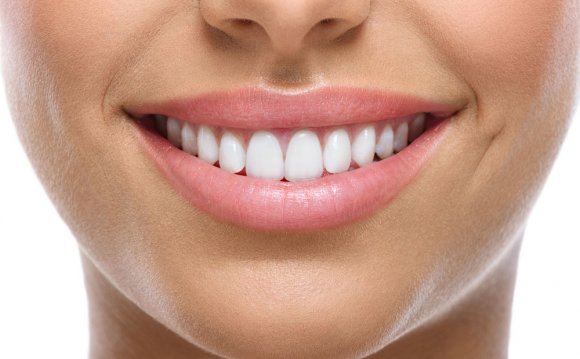
Dental bonding is one of several types of restorative treatments used for both health and cosmetic purposes. The natural-looking resin used in bonding, for example, can be used instead of traditional metal fillings, to repair a chipped tooth or even change the dimensions of a tooth that needs cosmetic repair.
Restorations don't require a great deal of special care, but when it comes to whitening bonded teeth, there are some things you should keep in mind.
How Bonding Responds to ColorAlmost everyone has dealt with stains on their teeth at one time or another. Surface stains are caused by contact with common, everyday foods and beverages like tea or coffee. If you smoke regularly, your teeth may have either brown or yellow stains from contact with nicotine. Teeth whitening is an effective and simple way to remove these types of imperfections.
Whitening bonded teeth, however, comes with its own set of exceptions. The resin used for bonding, as described by the University of Iowa College of Dentistry, neither stains nor whitens as easily as natural enamel, but it can suffer discoloration over a period of time. Why doesn't it respond as well to tooth-whitening treatments? Because the bonding resin is nonporous, unlike tooth enamel. Stains form when the staining agents penetrate the pores of the teeth, and because porcelain and bonding resin are both nonporous, they don't change color, however, they can become stained. So although bonded teeth can stain, they also don't whiten. If the bonded portion of your tooth does become discolored, you may find it more difficult to treat successfully.
When to Whiten Bonded TeethWhen you have bonding work done, your dentist chooses a resin that is similar in color to your natural teeth. This helps your cosmetic or physical restoration to blend so it doesn't look artificial. However, this can pose a challenge if you decide to have your teeth whitened. Because most bonding materials don't respond to whitening, as echoed by the American Dental Association (ADA), you can end up with teeth that are whiter than they were when you first underwent treatment. As a result, your untreated teeth may look stained or discolored in certain areas simply due to the contrast.
If the color difference is noticeable, you might choose to have veneers or another cosmetic procedure so your teeth are all the same color again. One way to avoid this problem is to have your teeth whitened before your bonding work. This way, your teeth are at their whitest when the bonding resin is color-matched. If you keep your teeth white with touch-up treatments and good dental care, your natural and bonded teeth will continue to match.
Other Effects of Tooth WhiteningKeep in mind whitening solutions can cause other side-effects whether or not your teeth are bonded. Certain over-the-counter whitening agents can irritate the soft tissues of your mouth. This is less likely with a professional whitening treatment because your dentist will protect your gums, tongue and lips with a protective gel. Another common result of tooth whitening is increased sensitivity, as addressed by National Institutes of Health (NIH). This sensitivity usually goes away after a short time, but if you have your teeth whitened frequently, it may prove to be more persistent. Using a toothpaste for sensitive teeth, like Colgate® Sensitive SmartFoam® with Whitening, will help reduce this sensitivity while improving their appearance at the same time.









